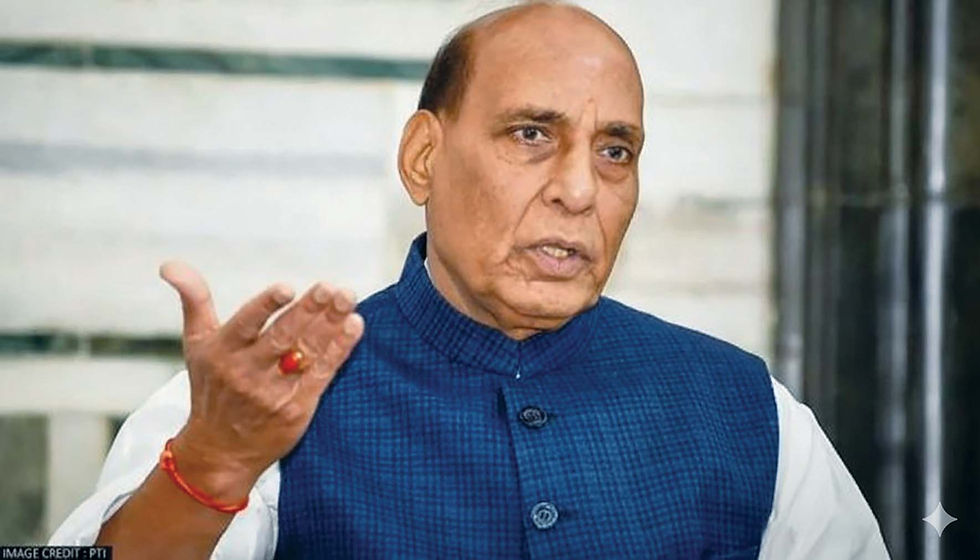Hydraulic Pressure
- Amey Chitale

- Apr 30
- 3 min read
India’s pause on the Indus Water Treaty marks a calculated shift from confrontation to coercive control.

Following the Pahalgam terror strike, India has suspended the Indus Water Treaty (IWT), citing ongoing security concerns. The treaty, which has endured decades of geopolitical challenges, now faces uncertainty as India uses its position as an upstream nation to regulate the region’s vital water flow.
IWT brokered by the World Bank in 1960, established a framework for water sharing between India and Pakistan. India was granted exclusive rights to the three eastern rivers (Ravi, Beas, and Sutlej) amounting to 33 million acre-feet (MAF) annually, while Pakistan received exclusive usage of the western rivers (Jhelum, Chenab, and Indus) with a total annual flow of 135 MAF.
The treaty bestows India with restricted rights over the western rivers, allowing usage for domestic needs, non-consumptive purposes like hydroelectric generation, and select agricultural activities in Jammu and Kashmir. Though India has developed dam projects along these waterways, their flow and storage remain tightly controlled under treaty regulations.
The annual combined flow of all six rivers is equivalent to 95 times of Mumbai’s total water storage. India is authorized to develop irrigation over 13.4 lakh acres in J&K but currently covers only 6.42 lakh acres. Similarly, while permitted to store 3.6 MAF from the western rivers, India's existing storage capacity remains significantly below this limit.
Immediately stopping such a massive water flow is unfeasible. While infrastructure on the western rivers remains limited, India’s well-developed facilities on the eastern rivers allow for temporary disruptions in Pakistan’s water supply. While the treaty permits India to store western river water only in July and August, suspension allows earlier storage, potentially limiting Pakistan’s supply during peak summer, impacting its sowing season. India could also disrupt water flow by suddenly releasing large volumes, causing unexpected flooding. Pakistan has already accused India of untimely Jhelum River discharge, allegedly triggering emergencies in Muzaffarabad. However, such actions remain constrained by existing infrastructure limitations.
India has adopted desilting as a short-term strategy to enhance water storage capacity. By removing accumulated sediment from river channels and reservoirs, this method increases storage potential and improves water flow management. Since it requires minimal infrastructure, desilting is a quick and effective solution.
Over the next few years, India plans to advance key hydroelectric projects on the Jhelum and Chenab rivers, including Pakul Dul and Ratle on the Chenab, the expansion of Kishanganga project on Kishangaga river (a Jhelum tributary), and fast-tracking Bursar on the Marusudar River (a Chenab tributary). While designed for hydroelectric generation, modifying these projects could increase water storage capacity to 1 MAF, potentially affecting Pakistan’s downstream flow,
India, while effectively using its eastern river share, still lets excess water flow into Pakistan. To curb this, it plans projects like the Shapurkundi Dam, the Ravi-Beas link and the Ujh multipurpose project which are expected to cut Pakistan’s water share by about 10 percent and boost Punjab’s irrigated area. Given Pakistan’s limited 14.4 MAF storage, even full Indian retention of its share could severely impact over 12 million acres of Pakistani farmland, strain power generation, worsen soil fertility, and accelerate groundwater depletion, especially amid increasingly erratic monsoons.
In their current stage and design, all these projects fully comply with the terms of IWT. Additionally, as they are not financed by the World Bank or any international agency, India remains free from external constraints in their execution.
Three key proposed projects on the western rivers remain unimplemented: the Marhu Tunnel, capable of diverting 2.5 MAF from Chenab to Ravi; the Jhelum-Beas Lift Scheme, which can transfer 1.2 MAF annually; and the Chenab-Ravi Link Canal, designed to redirect Chenab’s water to Ravi, significantly expanding irrigation in Punjab and Haryana. If executed, these projects could be completed by 2030-31, drastically impacting Pakistan's agricultural sector which has 30 percent share in its GDP exacerbating its already high inflation rate and food insecurity.
IWT doesn’t allow unilateral withdrawal or termination. However, India’s non-signatory status to the Vienna Convention and Pakistan’s signed but unratified stance creates gray area that India can exploit. While Pakistan may push the issue to the UNSC, India’s strengthened diplomatic ties at the world stage would reduce external pressures. Notably, India has suspended rather than revoked the treaty, allowing it to frame its stance as adhering to treaty principles while signalling potential restoration if Pakistan halts its support for insurgency.
India’s handling of the IWT reflects Sun Tzu’s maxim that wars are best won through strategy, not combat.
(The author is a Chartered Accountant with a leading company.)





Comments